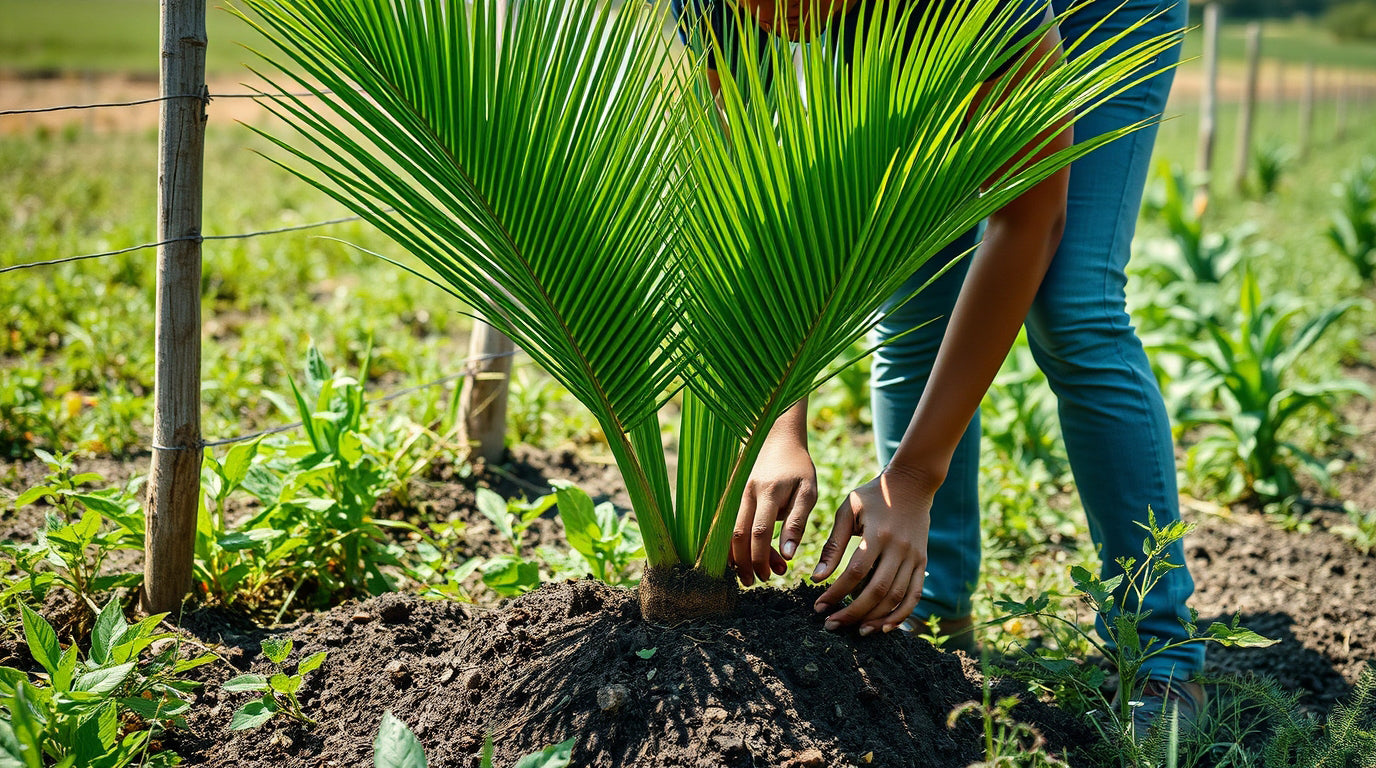Fertilizer requirement for adult coconut trees in India.
Coconut is cultivated in various soils situated in different agroecological zones. The structure and texture of soils are not similar and the nutrient status of the soil also may be different from place to place. Hence it may not be appropriate to suggest a uniform recommendation of fertilizer requirement nationwide. Application of fertilizers both in excess and insufficient quantity will affect the plant's health. Based on soil testing results, a balanced application of nutrients is required for the sustainable production of coconuts. It is estimated that 92 to 149 kg of Nitrogen, 12 to 20 kg of Phosphorus, and 119 to 183 kg of Potash is depleted approximately from one hectare of coconut every year. The nutrients depleted from the soil have to be added to the soil by way of organic and inorganic fertilizers. However, scientists have formulated a common recommendation for fertilizers required for coconut in India as follows

General fertilizer recommendation for Coconut (gram/Palm)
|
Age of tree |
May - June |
September - October |
||||
|
N |
P2O5 |
K20 |
N |
P2O5 |
K20 |
|
|
1st year |
…. |
… |
… |
50 |
40 |
135 |
|
2nd Year |
50 |
40 |
135 |
110 |
80 |
270 |
|
3rd Year |
110 |
80 |
270 |
220 |
160 |
550 |
|
4th Year onwards |
170 |
120 |
400 |
330 |
200 |
800 |
Apply Organic manure @50 Kg per palm or 30 kg of green manure every year after opening the basin. The recommended dose of major nutrients (NPK) is 500 g N, 320 g P2O5, and 1200 g K2O/palm/year in two split doses. To get these nutrients we may have to apply 1.2 Kg Urea, 1.5Kg Rock phosphate(in acidic soils) or 2Kg Superphosphate(Non acidic soils), and 2 Kg Muriate of Potash per palm /Year. Thoroughly mix these straight fertilizers and apply them in the basins. Another option is, application of 700 g DAP(Di ammonium phosphate)815g of Urea, and 2Kg of Muriate of Potash per palm /Year. However, straight fertilizer is economical as compared to complex fertilizers like DAP, Factomphos 20:20, IFFCO10:26:26, etc., and coconut mixtures like 8:8:16, 15:15:15, etc., which are available in the market.
The above recommendation is for an adult palm required for a year. For seedlings, we need not apply the full dose. During the 2nd, 3rd, and 4th year, only ¼, ½, and ¾ doses of the above fertilizers should be applied respectively.
In addition to this, soil application of magnesium sulphate( MgSO4 ) @500 g per palm was found to be beneficial in the case of palms with yellowing symptoms of leaves. If the soil test values of available P in the soil are more than 20 ppm, application of P may be avoided, especially in acidic soils. In case of palms showing symptoms of Boron deficiency, apply 100 to 160 g of Borax per palm in four split doses along with 20 kg of vermicompost per palm.
If the garden has irrigation facilities, the fertilizers can be applied in 3-4 equal split doses. In the case of low-lying areas, apply fertilizer after the water table recedes in one single dose or two split doses. In all types of soils that are low in organic matter content (except reclaimed clayey soils and alluvial soils), apply organic matter of 15-25 kg per palm per year during June - July from the second year of planting.
In the case of dwarf palms cultivated for tender nut purposes, NPK dozes @ 530: 150: 1200 g /palm/year along with raising and incorporation of cowpea in coconut basin, application of 15 kg vermicompost and 5kg neem cake is recommended.
Apply manures and fertilizers in circular basins of 1.8 m to 2 m. from the base of the palm, and incorporate them with soil. While applying chemical fertiliser there should be moisture in the soil.
In order to attain maximum production, manures and fertilizers have to be applied judiciously with appropriate quantity and in proper time.
